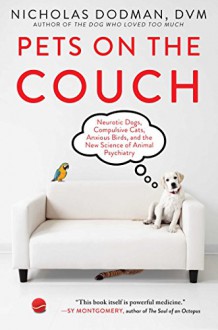Decoding Your Dog: The Ultimate Experts ...

The Zeva Project is my quest to find an activity that Zeva and I can participate in together to relieve her current state of boredom. I am reading nine books, some of which are on the psychology and training of dogs and some which describe specific dog activities.
This book is written by Veterinary Behaviorists who really know what they are talking about. They should. I had no idea of the amount of education required to become an animal behaviorist. First, successful completion of vet school, then more. I thought vet school was long.
our dog, Zeva, is a Toy Fox Terrier. We have her because I volunteer at a shelter, and one day in February, 2013, which was a very cold year, this dog was brought in freezing and traumatized, and in need of fostering. So I brought her home to foster. Five days later when we were scheduled to take her back, Richard put his foot down and declared she was not going back to that place. Zeva loves Richard.
It had been my intention that the next dog we acquired would be one I could train to be a Pet-Assisted Therapy Dog. Zeva is not that dog. She is adorable and we love her, but she is not really sociable, especially around children, and she's a terrier, kind of excitable and spontaneous, so not the best temperament. Although you can train terriers to be PATDs, it would make Zeva uncomfortable, and that is certainly not the effect I'm going for.
So I am on a quest to find other suitable, fun activities for her, because she is obviously missing mental and sensory stimulation in her life. She practically begs me to put her through her paces which we learned in obedience training, and while it is important to keep practiced in Sit, Stay, Come, a never-varying routine is boring. When she is begging me to run her through them, then I know it is time to find something new.
I've tried various avenues, but the town we live in is small enough that the only dog training classes offered is basic obedience. I can drive an hour to a facility that offers Rally and Agility, but those classes are offered only in the evenings, the busiest time of day when every ring is full and the noise is at the level of pandemonium. Zeva doesn't find that fun, and therefore it isn't conducive to her learning.
Which leaves me with the alternative of internet research or books. I got eight books from the library in the hopes that one of them will tell us, or better, show us how to interact with our dog.
this one isn't it.
but I loved it anyway. Ok, I'll admit that the first two or three chapters weren't thrilling me. For one thing, I had just finished Am I Boring My Dog?, and it was fun and funny as well as informative, (This book is neither fun nor funny); and for another thing, within the space of those three chapters, it twice related the exact same "anecdote as illustration of my point." Twice!
But then. . . So much better.
You dog people, have you ever, like me, thought your dog looked guilty because he knew he had done something wrong? Guess what? That is not at all the message he is trying to convey to us humans. And has your dog ever left proof that he is mad at you for leaving him at home? Perhaps by defecating on your comforter, or chewing up your favorite shoes? Again, that is not what a dog means when he does those things.
This book tells you how better to read your dog and how to respond appropriately. It itemizes many actions that your dog does, the various reasons he might be doing them, and effective ways to eliminate or change them.
this is a really intelligent book, and I think maybe it should be required reading for anyone who works with dogs.
this one was borrowed from my public library, but it's another that I will be purchasing to add to my own.
still not exactly what I'm looking for in relation to my own dog and our immediate goals though, so on to the next one.



 Log in with Facebook
Log in with Facebook 









